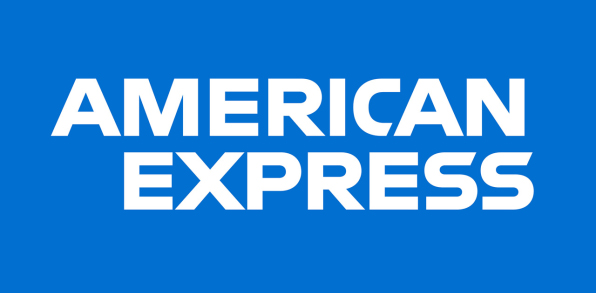In the internet age, social media websites have emerged as vital mediums for businesses that want to connect with their audience, enhance brand awareness, and stimulate interaction. However, every platform offers unique features, audiences, and benefits.
To effectively use social media for your brand, it is essential to compare platforms and select those that best suit your objectives and target audience.
This guide will help you compare the most significant social media platforms to determine the most suitable for your brand.
Why is social media important?
As you know, social media platforms are available for anything and everyone. These platforms link individuals with similar hobbies, common interests, comparable demographics, and more.
The point is that there are far too many for you to be active on all of them, especially if you are a small or medium-sized firm with limited resources and money. Additionally, you would be better off concentrating your attention on the websites that assist you in achieving your objectives.
Types of Social Media Networks
In the past few years, social networks have grown exponentially. New networks are constantly popping up, and old networks change to stay competitive. It is becoming increasingly difficult for teams, even those with lots of resources, to be present on all of them.
Now that we have a shared comprehension of how customers use various social media platforms today, we can assist you in determining where to direct your efforts.
General social media networks
When considering more conventional online social networking, most individuals envision broad social media networks. These networks primarily aim to facilitate interaction, communication, and media exchange. They facilitate everything from sharing photos and text to connecting with other professionals and forming communities.
Community-driven social networks
Community-driven social networks provide designated areas for organizations that share common interests. In contrast to broader social spaces, these networks prioritize group discussions and direct interactions within specific, interest-based communities.
Social entertainment networks
On social media, “edutainment” surpassed memes, serialized material, and skits as the most engaging corporate content, with 66% of users expressing this preference. Some networks are designed to be entertaining from the ground up, even if all platforms are starting to favor more entertaining programming.
Vertical social networks
Numerous specialized social media platforms have been developed to cater to the needs of very specialized groups. Letterbox caters to movie buffs, Strava is for runners, Nextdoor is for local communities, and so on.
If your target audience is part of an established vertical network, these platforms may provide unmatched access to genuine viewpoints that can improve your marketing approach.
For example, a construction company in a particular location might find better value in focusing on Nextdoor rather than making large expenditures on more general platforms.
The Comparison of Social Media Platforms
Facebook has more than 2.8 billion active monthly users, making it the most prominent social media network. It first appeared on the scene in 2004 and has since developed continuously, gaining capabilities that appeal to consumers and companies.
Let us take a deeper look at the reasons why Facebook is so popular:
- Key Features: Facebook provides many features, including profiles, pages, groups, events, and a marketplace. Users can share text, photos, videos, and live streaming. With Facebook Ads, companies can target the desired demographics, behaviors, and interests for more excellent conversion rates.
- Advantages: The platform is widely used, so many individuals find it relevant. Its sophisticated algorithms guide target items to a suitable audience. Integrating Messenger also helps businesses interact with their customers directly, enhancing customer service.
- Ideal Use Cases: Businesses that want to establish a name, connect with consumers, and conduct hyper-specific advertising campaigns will find Facebook an excellent platform. It is also a fantastic tool for event planning and group development.
Another dominant force in the social media sphere is Instagram, which emphasizes visual material. Brands that thrive on visual storytelling and younger consumers choose this platform, with over 1 billion monthly active users.
- Key Features: Instagram has tools like Shopping, Reels, Instagram TV, and Instagram Stories. People can share and post media that will disappear after a while, like movies and photos. The Explore page helps you find new things and get more people to see your work.
- Advantages: Brands in the fashion, culinary, travel, and leisure industries thrive on Instagram because of its visual nature. It is an excellent medium for influencer marketing and business promotion due to its high engagement rates on visual content, particularly Stories and Reels.
- Ideal Use Cases: Instagram is ideal for people and companies that want to produce eye-catching content. This platform facilitates influencer partnerships, product displays, and interaction with a younger, more visually oriented audience.
Well known for its brevity and real-time postings, Twitter has carved out a unique niche within social media. With apparently 300 million monthly active users, it is a hotspot for news, trends, and networking.
- Key Features: Twitter offers features like trending topics, hashtags, Retweets, and Tweets. The platform’s Moments feature compiles stories based on trending events and includes text, photos, videos, and live streaming using Periscope.
- Advantages: Twitter’s real-time nature makes it an effective public conversation and news distribution tool. It helps participate in discussions and popular hashtags. Brands may target specific demographics using Twitter Ads to promote accounts and messages.
- Ideal Use Cases: News organizations, journalists, celebrities, and corporations that want to participate in current discussions may use Twitter. Additionally, it helps with customer service, allowing companies to address consumer concerns and problems quickly.
LinkedIn is the most popular site for career advancement and professional networking. It is a digital resume, networking site, and content publication platform with over 700 million subscribers.
- Key Features: LinkedIn features profiles, connections, recommendations, and endorsements. Users may follow companies, provide updates, and turn in stories. LinkedIn Learning offers teaching tools, while LinkedIn Ads provides focused B2B marketing.
- Advantages: LinkedIn emphasizes professionals, so it is ideal for job seekers, recruiters, and B2B firms. The site’s strong search tools help users find possible clients, partners, and employees. The ability to create updates and pieces supports content marketing and thought leadership.
- Ideal Use Cases: LinkedIn is ideal for professionals wanting to network, recruiters searching for talent, and companies wishing to promote business-to-business (B2B) customers. Releasing material also helps build thought leadership and personal branding.
With more than 400 million monthly active users, Pinterest is a leader in sharing ideas and inspiration. The visually driven platform functions similarly to a digital bulletin board, enabling users to “pin” images and links of interest.
- Key Features: Pinterest Analytics, Boards, and Pins are its features. Users can upload photos, share links, and build thematic boards. The platform’s search function is visually oriented, allowing users to find similar ideas and inspiration.
- Advantages: Pinterest is a perfect place for guiding visitors to product pages, as its audience is often in a buying attitude and is very involved. Companies in the home, food, fashion, and tourism industries fit the platform’s visual focus. Pinterest ads help raise content’s profile quite a bit.
- Ideal Use Cases: Pinterest can assist companies in the fashion and leisure industries to enhance traffic to their online stores. It is a master of visual storytelling, idea exchange, and customer engagement during the discovery phase of their shopping experience.
Final Thoughts
In today’s digital world, numerous social media sites with benefits and features are available. Every kind of user may find a platform that suits their goals, whether they are a business trying to connect with consumers, a brand trying to build their online presence, or an individual trying to express themselves.
Considering these considerations, you can select the platforms that align with your marketing strategy and enable you to accomplish your company goals.
The right social media platforms can significantly enhance your brand’s social media standing and effectiveness, whether you want to appeal to a mass audience, engage them with visual content, or motivate professional connections. To know more about social media advertising. you can visit our computer software store.



